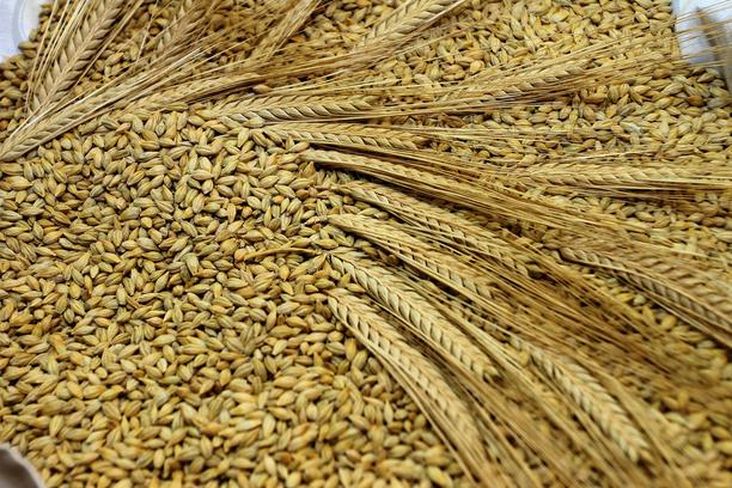Australia: Trade thin in divided season

Price moves were mixed and moderate in the past week as consumers weigh up the likelihood of a low-volume season in the north, and what could well be another bumper year in the south.
With Northern Hemisphere crops now filling the lion’s share of demand, exporters have pulled back their prompt buying, and competitively priced grain coming by road and sea into Queensland is capping the northern domestic market.
Some growers in southern regions are forward selling small amounts of wheat on multigrade contracts, but remain conscious of the likelihood of El Niño conditions settling in before the year is out.
| August 3 | July 27 | New crop | |
| Barley Downs | $425 | $420 | NQ |
| SFW wheat Downs | $435 | $432 | NQ |
| Sorghum Downs | $415 | $406 | NQ |
| Barley Melbourne | $360 | $360 | $360 |
| ASW Melbourne | $405 | $410 | $405 down $10 |
| SFW Melbourne | $400 | $410 | NQ |
Table 1: Indicative prices in Australian dollars per tonne.
Trade sources estimate as many as five vessels carrying barley from southern Australia have berthed in Brisbane since June.
Several trading companies have done the cargoes, and grain is mostly going to sites within 200km of Brisbane.
Across NSW, rail is carrying the vast majority of grain making its way to ports and coastal consumers, and road-transport operators are therefore offering competitive rates on freight in order to secure business for their fleets.
At Inverell, Stewart Grain trader Robert Quinn said growers are very reluctant sellers of both current crop and new crop.
“We’re seeing no grower backing; people are waiting to see what happens with rain, and it doesn’t look too good for August,” Mr Quinn said.
Crops on and east of the Newell Highway are mostly looking at average yields, and better in some cases, but very little area has been planted on the north-west plains of NSW due to ongoing dry conditions.
Mr Quinn said the lack of tonnes west of the Newell means northern NSW generally will be in deficit for feedgrain in the coming season, but ample carry-out has consumers feeling comfortable.
“Trucks are coming from further and further south, and boats are arriving too.
“There’s no shortage of grain, and freight’s a lot cheaper than it has been.
“Now that export finished…there’s no urgency to cover.”
Mr Quinn said growers were unlikely to consider selling any more current-crop grain before a big general rain, and while conditions are dry, they are rosier than the 2017-19, when drought gripped all of central and northern NSW.
The annual tail-off in export demand is directing unsold tonnage into the southern domestic market also, and GeoCommodities broker Brad Knight said demand was sluggish.
“Buyers aren’t that keen; they’re a big longer than they expected, and there’s no shortage of stock availability,” Mr Knight said.
On the sell side, growers are equally disinterested in engaging with the market.
“Growers might come up on the next rain.”
At Young, NSW, Grain Focus director Michael Jones said crop conditions are good, and people that can get urea are putting it on to bolster yield potential.
“There’s been a bit of new-crop business done on the rallies,” Mr Jones said.
Despite growers on the south-west slopes of NSW enjoying a very good start to the season, he said they were conscious rain could cut out.
“We keep getting told again and again there’ll be an El Niño.”
Mr Jones stocks of grain on farm on the slopes were limited.
“There’s not a lot left on farm.
“What is selling ex farm is end users covering out to November for chooks and pigs.
“Port demand is very quiet, and it’s all going by rail.”
Grain held west of the Newell Highway is continuing to travel into the northern market by road train.
On new-crop, Mr Jones said some growers have forward sold modest amounts on multigrade contracts when prices got about $400/t country site.
“They didn’t go overboard, and some people don’t forward sell at all.”
Read also
Wheat in Southern Brazil Impacted by Dry Weather and Frosts
Oilseed Industry. Leaders and Strategies in the Times of a Great Change
Black Sea & Danube Region: Oilseed and Vegoil Markets Within Ongoing Transfor...
Serbia. The drought will cause extremely high losses for farmers this year
2023/24 Safrinha Corn in Brazil 91% Harvested
Write to us
Our manager will contact you soon



